Backpacking
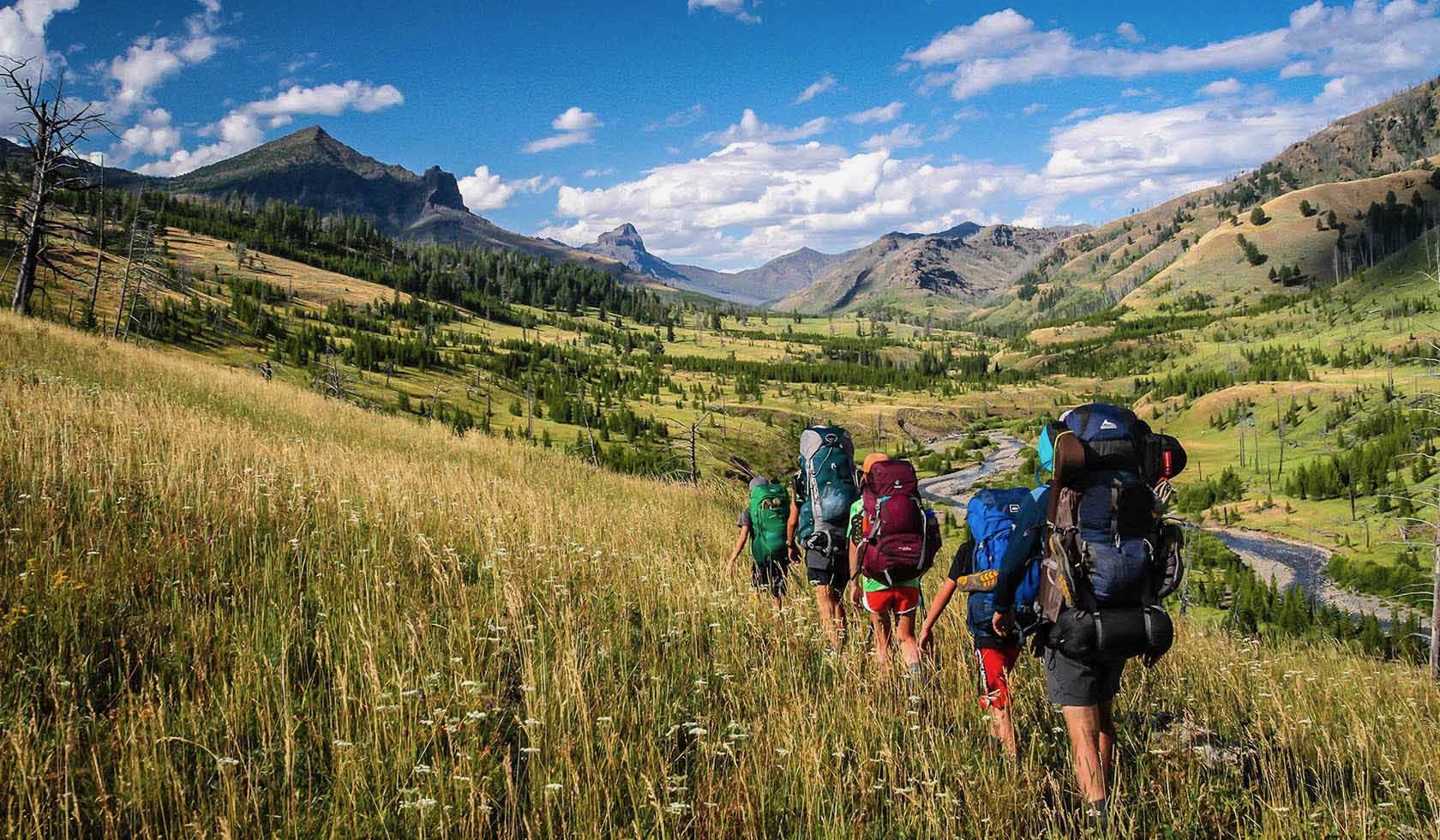
| Route 66 | Cities | Beaches |
| National Parks
Backpacking |
 |
| Getting There | Lodging | Restaurants | Natural Features | Hiking | Backpacking | Horsepacking | Fishing | Going Home |
The backpacking in Yellowstone is spectacular. Several of the greatest backpacking trips in North America are here. However, there are complicating factors. First, the season is short : July, August and early September. The snow and ice melt off late and return early. Second, the trails are long and the trailheads and exits are far apart. Very few hikers, even groups of four, bring a second vehicle. So how are you to spot a second vehicle at the exit or how do you get back to your vehicle at the trailhead? Third, every trip has creek or river crossings and some are challenging. Fourth, you're in country more remote than usual, so your margin for error is zero. Fifth, often trails are faint and hard to find. And, most important, Sixth, you're not only hiking but pitching camp and fixing meals in places heavily populated by Grizzlies, Black Bear, Bison, Wolves and even Mountain Lions. Combining all these factors, no matter how experienced and self sufficient you are, we highly recommend hiring a guide. Guides here are trained, equipped and experienced in dealing with these problems. You can relax and enjoy the trip without worrying about these concerns. We urge you to call Yellowstone Hiking Guides, Wildland Trekking and Discovery Treks. |
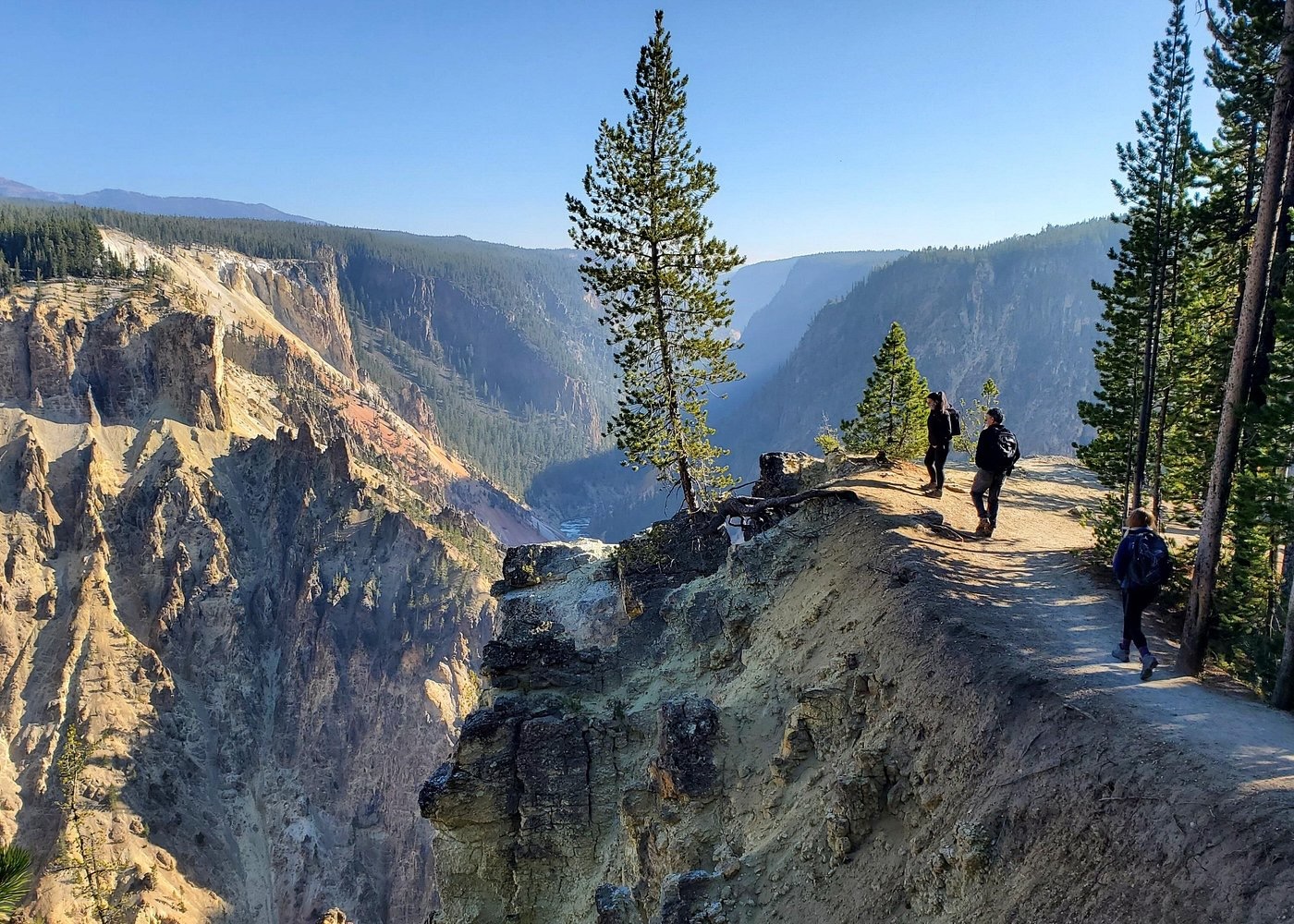 |
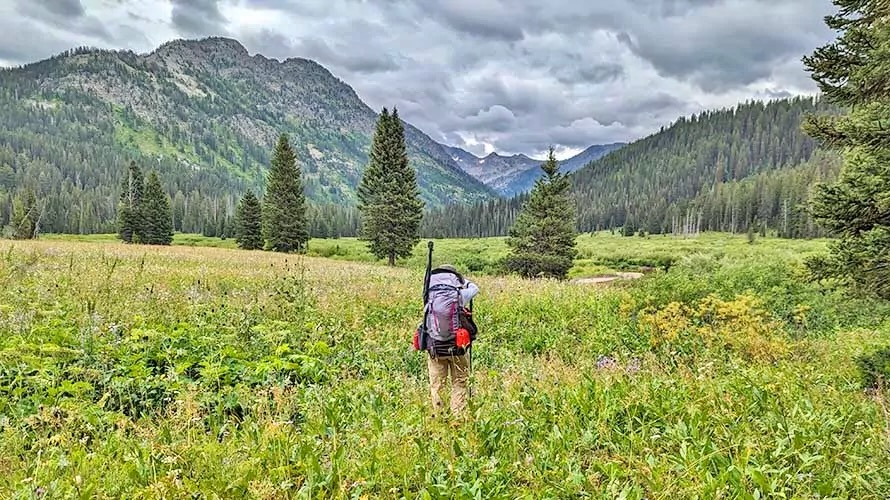 |
The Thorofare is the ultimate backpacking trip in the lower 48 states. Named for being the major Elk migration route, Thorofare offers gorgeous scenery, prolific wildlife, great fishing, and extreme isolation. At one point you're further from paved roads in any direction than at any other place in the U.S. This is a 69 mile, 9-10 day expedition. It begins at the Nine Mile Trailhead near the Lake Butte Overlook on East Entrance Road. It ends at South Boundary Trailhead, 0.1 mile south of the South Entrance. If you're not using a guide service you'll need to park a vehicle there. This is for experienced backpackers, because if anything goes wrong you can't bail out and you're out of range of any kind of help. The first two days are along the eastern shore of Yellowstone Lake. Then you follow Yellowstone River up into the mountains before following Lynx Creek and Snake River out. Several major river fords are necessary, so pack everything in watertight bags. Don't try this in June or early July. |
Shoshone Lake is a photogenic lake nestled in deep forest in the park's southwestern corner. The Tetons loom on the southern horizon. The trail is mostly level but especially in June and July encounters frequent marshy sections. Mosquitoes are a problem here so you'll need to wear netting. Hiking in late August or early September avoids that aggravation. This is a 27 mile trip usually done in 4-5 days. The trip begins and ends at Delacey Creek Trailhead, 8.9 miles esst of Old Faithful on Grand Loop Road. You hike 2.9 miles to the lake, and each day hike further around it, using a different campsite each night. The trail stays in forest most of the way but occasionally climbs and descends steep ridges. At the far end of the lake you come to Shoshone Geyser Basin, which is extrensive and has several interesting features. During your 4-5 days here you'll make several serious fords, the most challenging of which is the Lewis Channel (outlet from Shoshone Lake). You probably don't need a guide for this trip unless you just want insurance against Bears. This is a great first backpacking trip in Yellowstone. |
|
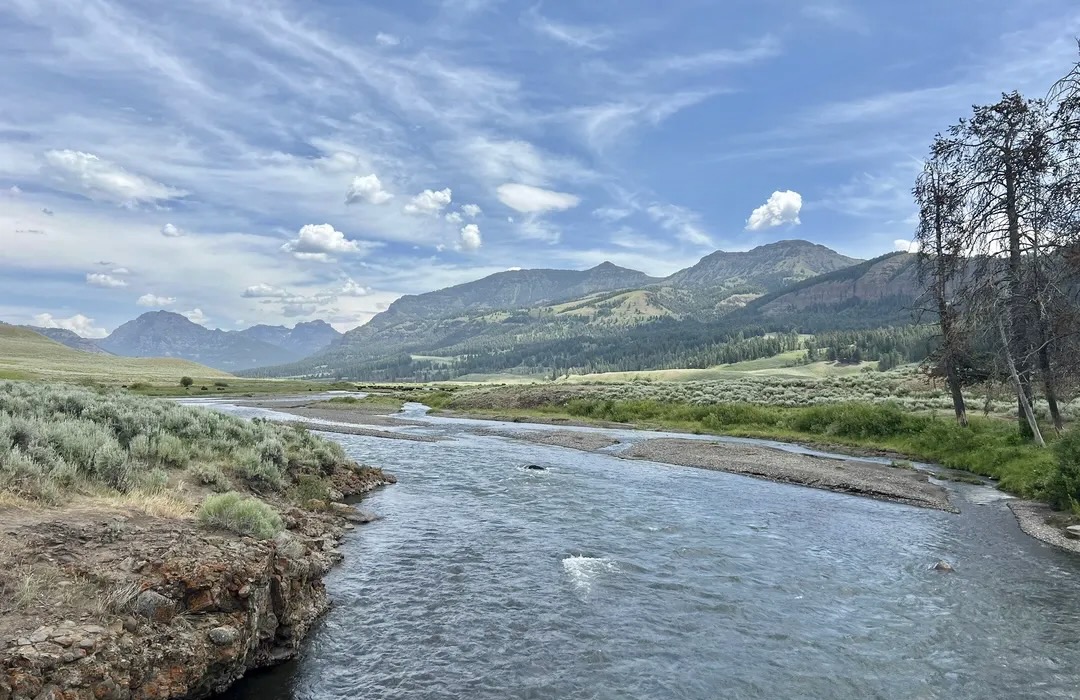 |
The Lamar River is a beautiful out and back trip with an easy trail, lots of Bison, Elk, Grizzly, Black Bear, Antelope and Wolf sightings, great fishing and spectacular scenery. The trailhead is along the Northeast Entrance Road near Cooke City and Silvergate. The trail heads southeast from the road toward the park's eastern boundary. This is a 5-7 day trip. The trail is passable in late June, July, August and early September, although in June stream wadings may encounter waist high water. |
Hayden Valley - Fern Lake - Pelican Creek (30 miles) is considered by many backpackers to be the most beautiful trip in Yellowstone. But it has a very narrow window. You can only hike it in August and you really need a professional guide because you're entering prime Grizzly habitat. So prime that the park officially closes the Pelican Creek trail in September, when Grizzlies take over the valley, gorging themselves on Whitebark Pine Nuts in preparation for hibernation. They also allow hikers during August only between 9 a.m. to 7 p.m. If you go with a guide, his company will pick you up at the Pelican Creek Trailhead when you're done. Otherwise, you need to spot a vehicle there 3.5 miles east of Fishing Bridge Junction on East Entrance Road. Turn north onto a gravel road for 0.5 miles. Pelican Valley is north of the road. You start at the Wapiti Lake Trailhead 2.4 miles south of Canyon, turn left onto South Rim Drive and in 0.2 miles look for the trailhead parking lot. At first you hike across the broad Hayden Valley meadow where you'll see Bison, Elk and Antelope. Then you enter the forest for six miles to Campsite 4M2, 7.9 miles in. Second day you follow Wapiti Lake - Astringent Creek Trail six miles to the Wapiti Lake - Fern Lake area where there are seven campsites. You're in an area with thermal features, great fishing and scenic trails so you can basecamp and spend a day or two exploring. This is prime Yellowstone Cutthroat Trout water, especially since it's so remote and risky and there are few fishermen. Yellowstone Cut Throat are endangered so it's catch & release. The hike out is a beast. You have to go 14 miles to the trailhead. You can't camp in the Lower Astringent Creek or Pelican Creek drainage because it's full of Grizzlies. |
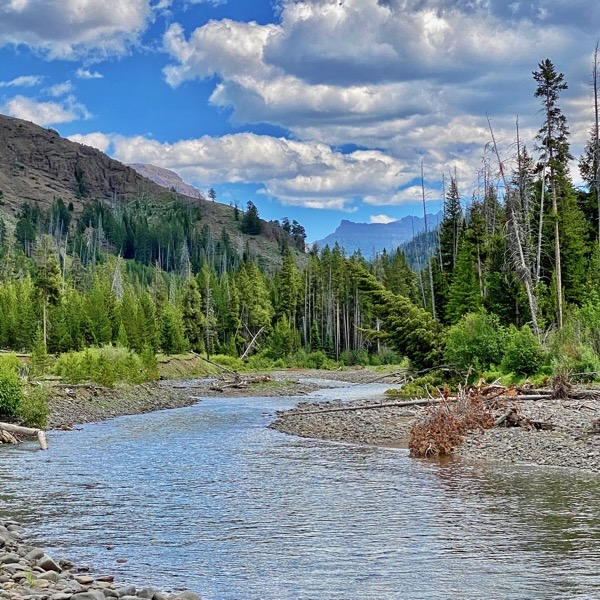 |
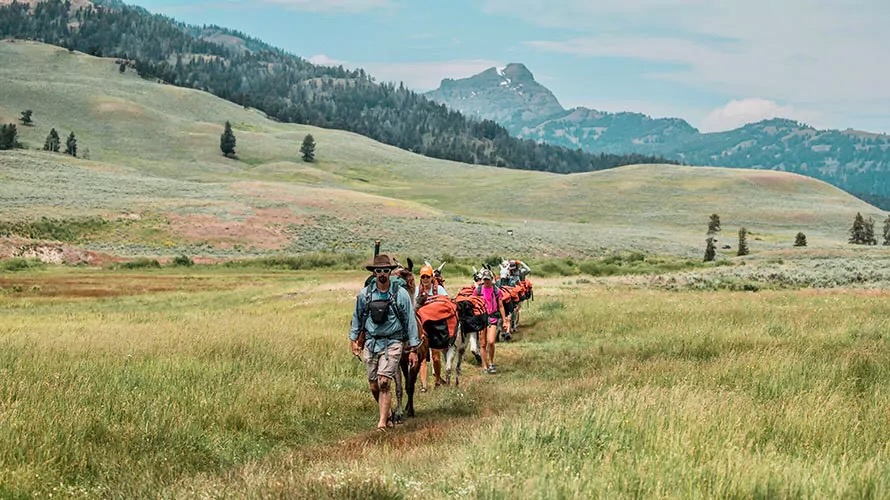 |
There's another way for you to see the Pelican and Lamar Valleys. Wildland Trekking, and its subsidiary Wildland Llamas, offers a five day 34 mile Llama trip up the Lamar River, over Mist Creek Pass and down through the Pelican Creek Valley. Llamas carry your equipment while you carry a light day pack with water, snacks, lunch, raingear and camera. For details on this trip call Wildland Trekking 800-715-4453. Wildland also offers five other Llama trips in various corners of Yellowstone. You can check them out at their website wildlandtrekking.com. |
| Specimen Ridge is one of the most scenic trails in the park but demands careful thought. The full trail is 17.7 miles, so while some do it as a marathon day hike, it's too long for most. Then there's the ford of the Lamar River in the last mile. This is a wide, fast flowing, cold, waist high ford in ideal conditions. After a rain it becomes impassable. So you need to check with rangers before beginning the hike. You really need to do this as an overnight. There's a perfect campsite 6.4 miles in, on a side trail. It's at the intersection of the Yellowstone River and Agate Creek. You have views of mountains all around, a beautiful river in front of you, and probably a lot of wildlife across that river. There's also good fishing for Yellowstone Cutthroat Trout. Next day you can either hike back out, or continue on eastward to the Lamar River ford. You'll climb and drop 3,000 feet so you need to be in shape and have proper boots. You need good route finding skills because the trail grows faint in several places. Bear keep moving flags, signs and cairns. |  |
|
|||
|